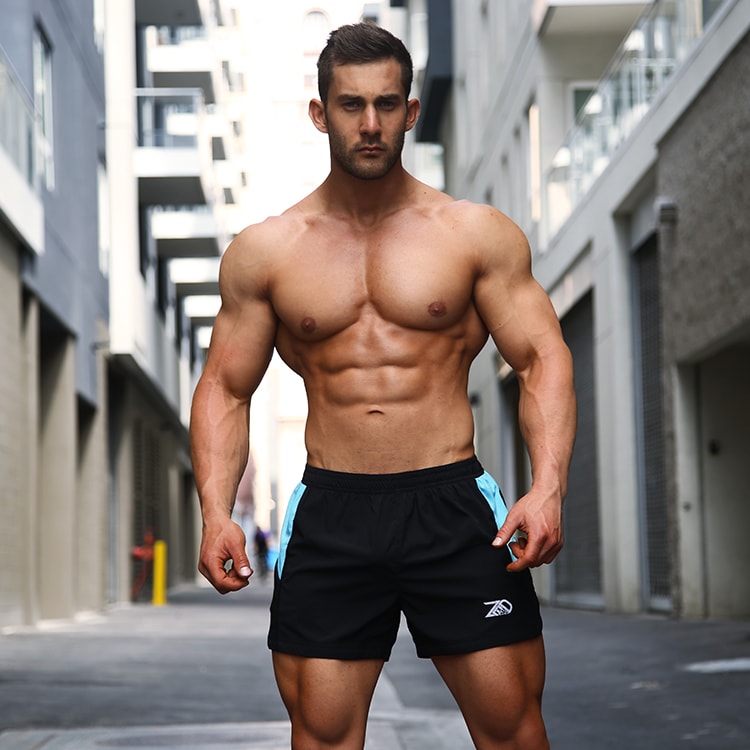Big muscles and low body fat.
It’s what every guy wants.
Or at least every guy who cares about his physique.
We see the dudes on the magazine covers, on Instagram, and even in the gym who have the ‘ideal’ physique, and admire the features they all have in common –
- a visible six-pack
- cannonball shoulders
- wide lats
- bulging biceps and horseshoe-like triceps
It’s clear that these guys have put in the time with their training and their diet to get like that, and only a fool would believe that it’s taken them any less than 3 to 4 years at the very least.
So we know it takes dedication, patience and consistency, but one thing that bugs the hell out of so many of us is how they’re so big AND lean.
It seems like these guys must be genetic freaks, as for everyone else, when we try to build muscle we just lose our abs under a mountain of flab, and as soon as we diet down to lose fat, our strength plummets and we look small, skinny and weak.
It’s not fair.
What do these physique gods have that everyone else doesn’t?
And what’s their secret to building muscle and losing fat at the same time?
The 3 Golden Rules of Simultaneous Fat Loss and Muscle Gain
There are three instances where you can build a substantial amount of muscle and lose body fat at a noticeable rate.
They are –
- You’re brand new to training.
You only get one shot at this, and unfortunately, so many people just don’t take it.
Hey, hindsight is a wonderful thing, and 90% of guys start their lifting career by not eating enough, and spending far too much time doing biceps curls, which leaves potentially amazing muscle gains on the table.
If you’re reading this as a newbie – take note. Right now is the time you can see the biggest changes in your physique, so do your reading so you can train and diet smartly straight from the beginning.
This is similar to point #1.
If you’ve been injured and not trained for some time (either you’ve had a break from a particular body part, or not trained full stop,) then your muscles are highly receptive to any kind of stimulus and will jump at the chance to grow, even if you’re not eating a high-calorie diet.
- You massively ramp up your volume or frequency
This rarely happens, but if someone’s used to following a very low-volume, low-frequency routine – say they only work each muscle once a week for 4 or 5 working sets – and they suddenly double up to twice a week, hitting 6 to 10 working sets each time, they’ll blow up.
Sure, they’ll feel sore as hell too, but even if they’re dieting, they’ll probably see some growth.
The annoying thing about all these though is that most of us are past the first scenario.
We don’t want to get injured or take a break, as while you might regain muscle when you come back, you have to lose it first.
And finally, there’s only so high you can take your frequency and volume.
With that in mind, we’ve still not solved our conundrum.
The Secret of Goal Cycling
If you set out with the goal of getting big and lean at the same time, you’re going to fail.
The fundamentals of weight loss and weight gain (or specifically fat loss and muscle gain) are –
To lose fat you must be consuming fewer calories than you burn.
To build muscle you bust be consuming more calories than you burn.
That’s science, and no matter what foods you eat, what supplements you take and what training protocols you follow, you can’t cheat it.
That’s why to get the best of both worlds, your training has to be cycled and periodised. We need phases where you’re focused on building muscle and phases focused on losing fat.
Muscle is tougher to build than fat is to lose, as you can only realistically gain a maximum of 1 to 2 pounds (0.5 to 1 kilo) of lean weight every month, whereas fat loss of 1 to 2 pounds per week is pretty normal. It also depends on your genetic capability, some people can add muscle easier than others.
Plus, you need to take your muscle gain periods much steadier. You can’t force feed gains and build new lean tissue just by eating more calories. Sure, you need a surplus, but if you choke down an extra 1,000 calories every day in the hope it’s going to get you stacked, you’re only on a fast-track road to getting fat.
That’s why a muscle gain phase needs to be taken slower than a fat loss phase, and last two to four times longer.
You can structure this in one of two ways:
If you’re naturally skinny, and have a hard time building muscle, but tend to stay pretty lean, then make your muscle gain periods four times longer than your fat loss phases.
For the guys out there who carry more fat, but have more God-given strength and muscle, you may only need to take two to three times the length of time bulking.
How long you make each phase is up to you.
If you feel seriously small at the moment, and want to compete in bodybuilding or powerlifting, then you may need 6 months of gaining, followed by 6 to 8 weeks of cutting.
For those who gain fat easier or who want to stay lean, then you could try 4 to 6 weeks dieting for every 12 weeks of bulking.
Steady Progress
The key to all this is to not rush the process, and to keep your eye on the long-term prize, not daily or weekly fluctuations.
Are you going to gain some fat when you’re trying to add muscle?
Almost certainly, but you can lose this fat so easily when you’re in a dieting phase.
Likewise, you’ll probably drop a little muscle and see your strength go down whenever you diet, but you won’t suddenly become skinny, weak and get matchstick arms and chicken legs within a week.
You need to set yourself a timeframe before each phase and stick to that.
My suggestion?
Stick to a very minimum of 3 months (and up to 6 months) for a gaining phase and 2-3 months for a cut, and don’t try to do too much, too soon.
Shoot for the fat loss and muscle gain figures I gave you above, and remember that it might take you a few years to get exactly where you want to be, and even then, you’ll still want to improve.
Hey, that may not sound sexy, but it’s the truth.
Stupid trainers try to do everything at once.
Smart trainers split their plan into phases and have patience and dedication.
Which one are you?


